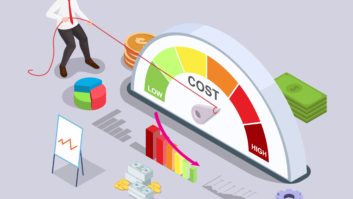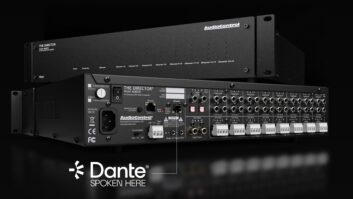AV integrators can benefit greatly from mobile marketing if they have a grasp of how mobile technology is affecting consumer behavior.
If you’ve taken the digital plunge and are driving traffic to your website, don’t let the trail end there. Take a hard look at your website. Is it optimized to lead qualified buyers to your location? Is your phone number and contact information front and center to convert attention into calls? Can clients successfully navigate your site?
Here are six easy tips to turn your website into a sales (conversion) machine.
1. Choose the Right Website Partner
In today’s crowded marketing space, your website is your primary marketing vehicle to communicate with qualified clients. It’s one job you don’t want to leave to an amateur. If you’re in need of a good website, reach out to other integrators and ask for recommendations. Firefly Creative is a well-known website vendor focused on the AV industry, and can help plan your content strategy as well.
If you have a basic site, consider upgrading to a “premium” site that offers dynamic landing pages for your top brands, services and products.
Either way, be sure your site is designed to look/work properly on all devices (PCs, tablets and smartphones). Developing for a multi-screen world now involves an understanding of mobile browsers and the user’s experience on a wide array of touchscreen devices. The popular solution is responsive web design, which leverages new features to actively modify the size and position of web-page elements based on screen size, orientation and pixel ratio. Ask your website vendor about this.
2. Ensure Contact Information Clarity
You only get one chance to make a first impression, and less than 10 seconds to catch your client’s eye.
Every page on your website should have a standard header, including your business name and logo, along with your phone number and showroom address (if you have one) on the top right side in large, bold font.
Don’t bury your showroom hours in the footer. Find a way to cleanly insert your hours in the header as well. Think small and legible.
In footers, include the awards you’ve won or associations you belong to (CEDIA, HTSA, Azione Unlimited, etc.) Replicate your site navigation as text links in the footer, but don’t overwhelm visitors with too many links.
Beyond your basic business information in the header, don’t miss the opportunity to create a “Contact Us” page on your site. This should be in your site navigation, and contain a map, address, phone number and hours. Embed a Google Maps Widget into your site.
Smartphone users should be able to click on your telephone number to make a call. Test this feature and see how long it takes to reach a sales representative. Optimize your internal phone process, and consider working with a vendor who can install Call Tracking numbers and technology to help you properly attribute phone calls, bids and installations.
Next, enter your showroom address into your smartphone. Does it work correctly in your turn-by-turn directions applications? If not, dive into Google Maps, find your Google+ Local page, claim it, and move the push pin on the map to your store location or the nearest intersection.
3. Highlight Your Universal Selling Proposition
Ask yourself: Why should a customer buy from you? “Best speaker inventory in Dallas?” “Award-winning service?” Decide on your universal selling proposition/differentiator and vigorously repeat it throughout your site. Be sure every page contains one or more elements of your USP.
Remember that time-based promotions drive conversions. People buy based on events (new home purchase, tax returns, holidays, etc.). Whether there’s an actual upcoming event or one you’ve created, build excitement around a time-based promotion and remind consumers when it ends (e.g., Super Bowl home theater specials end January 31).
4. Focus on Your Best Sellers
Don’t clutter your site with side products and offerings. Focus on your core–speakers, security systems, lighting controls, etc.—whatever you install the most and gives you the greatest margins.
If consumers want to look for ancillary products, let them search your site. Put a search box on every page in the header, and make sure search results are clear and link to live content.
5: Optimize Landing Pages to Convert Buyers
Now that your site is clean, clear, and ready to properly convert visitors into clients, it’s time to think “landing pages,” which are customized pages that serve as the destination for your marketing and advertisements, digital and traditional.
A good landing page has large images, a distinct but similar look, and clean design. Think of this as being closer to an advertisement than a regular Web page. For example, an image of a woman sitting in her living room using her remote to control the light, TV and fan is extremely effective. Include relevant brand logos.
Better yet, install conversion-optimized landing pages from manufacturers. Many top brands like Lutron, ELAN, Paradigm, and JVC offer these as part of a co-op campaign. This helps turn searches for these brands and their products into leads for you.
Briefly highlight top selling points, special offers, or a significant call to action with a time component. What can you say in five words or less to entice a qualified customer?
Other options include adding a printable coupon and embedding a video, as long as these elements don’t overwhelm the page. Videos produced in your showroom work best.
Don’t forget to include strong linkage back to your core website from your landing pages, and carry over your site navigation (header and footer) to get the best results. At the very least, provide a footer that gives visitors a path back to your main website.
Most importantly, embed a form on every landing page to capture basic customer information: first/last name and email. Posting another clear link to a “Contact Us” page also boosts conversions on these pages. Landing pages close the loop on every client interaction with your website, and will turn your website into a lead-generation machine.
Brendan Morrissey is CEO and co-founder of Netsertive.






